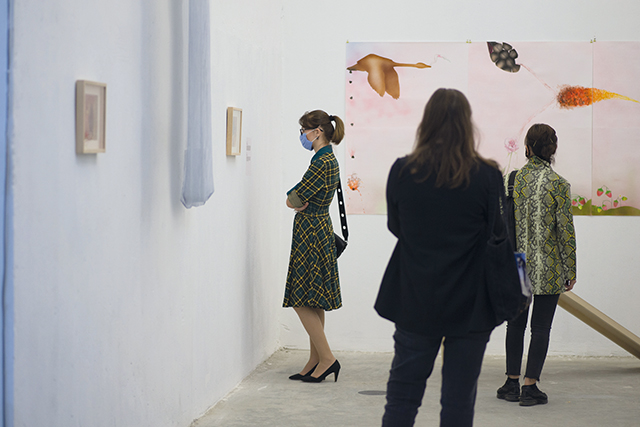Art in the Time of Coronavirus
The pandemic has made radical alterations to both the daily life and routine of individuals and the global order. We watch on as the new reality tests societal integrity and values, and reveals issues previously masked for years.
Art held our attention with innovation and variety at the coronavirus-inspired exhibition termed ‘Art & Freedom / Civil Rights in Times of Crisis,’ supported by the Friedrich Naumann Foundation for Freedom, and the Europe-Georgia Institute. The exhibition brought together works in various media by 21 artists impassioned to express their creativity in ways unusual to their normal practice. The event was dedicated to the 30th anniversary of German Unity Day.
The goal of the project is to record and exhibit (in real time) defining artwork created during civil uncertainty.
The works respond to subjects of socio-economic life, rights and mental health, made relevant by the crisis and the pandemic, from a personal perspective. The exhibition explores topics of alienation and isolation, and highlights the role of art in freedom of human self-expression.
While some works draw on the sense of fear and isolation felt by many, others are inspired by novel ways of overcoming difficulties. Whether that means reaching into the back catalogs of their memories, or imagining chimerical worlds and landscapes, the artists draw on hybrid aesthetics to reaffirm artistic creation as the primary aim.
“Under quarantine in the spring of 2020, in the midst of unforeseeable present and future circumstances, and when everything in the imaginative and physical world is vague, chronesthesia becomes a tool allowing the mind to multiply existing subjective realities and seek a legitimizing of personal or general ‘significances,’ even from the most recent past,” reads the caption to Salome Jishkariani’s wondrous photo prints. Upon viewing her prints, ordered clock-time is subverted in favor of the enigma pertaining to the concepts of Time and Space, as well as the perplexity of their relationship.
David Kukhalashvili’s unmistakable style in his work City conveys a message of tolerance that transcends art and has profound implications in the political and social realm. The caption to his work reads: “In our current period of development, we are totally dependent on each other, economically, politically and culturally. The pandemic gave birth to fear and a sense of helplessness, touching every layer of society and reaffirming the might of nature."
Teo Burki’s artwork depicting an urban glitch of skyscrapers is more expressive and messier, more abstract in its style. She too experiments with ways of capturing space, time and movement through juxtaposing different surfaces into a variety of formations. The caption to her triptych reads: “A fusion of circumstances regulated through various forms brings open-space cityscapes of Cubist stylistics together with a state of private, delusional sublimation.”
The works were selected via open contest. As part of the project, at the Art-Villa Garikula residency, the featured artists worked on a concept presented earlier. As a result of discussions and meetings, the participants had the opportunity to share their experience and rethink the subject.
Participants: Mari Aqubardia, Tamar Botchorishvili, Bouillon Group, Teo Burki, Misha Gogrichiani, Nino Zirakashvili, Ana Tarashvili, Maka Kiladze, David Kukhalashvili, Teo Maspi, Qeu Meparishvili, Tamar Mtchedlishvili, Mariam Natroshvili / Detu Jincharadze, Natia Chikvaidze / Anushka Chkheidze / Saba Shengelia, Giorgi Khaniashvili, Tamar Khmiadashvili, Salome Jishkariani, and Nutsa Jgarkava.
Curated by Salome Sordia
Graphic Design: Elene Gabrichidze
Supporters: Heidelberg Cement, Telavi Wine Cellar
The exhibition was on from October 3 to October 8.










